Medicines for the treatment of type 2 diabetes, September 2022
Page last updated: 17 May 2024
Drug utilisation sub-committee (DUSC)
September 2022
Abstract
Purpose
To review the utilisation of medicines for the treatment of type 2 diabetes mellitus (T2DM), with a focus on the use of glucagon-like peptide‑1 receptor agonists (GLP‑1 RAs), sodium-glucose cotransporter 2 (SGLT2) inhibitors and dipeptidyl peptidase-4 (DPP4) inhibitors outside the Pharmaceutical Benefits Scheme (PBS) restrictions.
In July 2022, the PBAC noted that the PBS restrictions for GLP-1 RAs required patients to be contraindicated or intolerant to the combination of metformin and a sulfonylurea (SU) to receive subsidised access to a GLP-1 RA in dual therapy with metformin or a SU. The PBAC considered that clinicians may have a broader interpretation of contraindication to SUs in clinical practice than in the clinical trials and estimates of use that supported the PBS listing of GLP‑1 RAs. The PBAC recommended an updated review of the utilisation of T2DM medicines, which would include an estimation of the extent of use of GLP-1 RAs outside the PBS restrictions, such as use in monotherapy, and in dual therapy in patients not contraindicated/intolerant to a combination of metformin and a SU.
Date of listing on the Pharmaceutical Benefits Scheme (PBS)
The DUSC reviewed medicines for the treatment of T2DM in October 2012/February 2013, and for diabetes more broadly in February 2017.
Key changes to T2DM medicines since 2017 include the listing of two GLP-1 RAs (dulaglutide in June 2018 and semaglutide in July 2020) for use in dual therapy with metformin or triple therapy with metformin and a sulfonylurea (SU), and extensions to these listings in 2021 to allow concomitant use with insulin and metformin (except where metformin is contraindicated or not tolerated). The first fixed dose combinations (FDCs) of SGLT2 inhibitors with DPP4 inhibitors were listed in April 2018, for use in triple therapy with metformin. Further details are provided in Table 1 of this report.
Data Source / Methodology
Data extracted from the PBS claims database maintained by the Department of Health and Aged Care, and processed by Services Australia, were used for the analyses. Prescription data were extracted from 1 January 2015 up to and including 30 June 2022 based on the date of supply. Patients who were only supplied insulin in this period were excluded as likely to be patients with type 1 diabetes. Analyses included:
- Use of metformin, SU or insulin prior to GLP-1 RA initiation.
- Use of GLP-1 RAs in combination with another GLP-1 RA, an SGLT2 inhibitor or a DPP4 inhibitor.
- Use of a GLP-1 RA, SGLT2 inhibitor or a DPP4 inhibitor without concomitant use of metformin, a SU or insulin.
Key Findings
- In 2021, the total number of people supplied a medicine for the treatment of T2DM through the PBS was around 1.42 million.
- In mid-2022, biguanides (metformin) were the most commonly supplied class of medicines for the treatment of T2DM, followed by (in order of most commonly supplied), DPP4 inhibitor + metformin FDCs, GLP-1 RAs, SU and SGLT2 inhibitors.
- Total expenditure based on the published list prices on T2DM medicines has increased from around $516 million in 2017-2018 to around $756 million in 2021-22.
- GLP‑1 RAs are now the highest expenditure class of medicines on the PBS for the treatment of T2DM accounting for 26% of expenditure in 2021-22 ($194 million).
- There are several examples of apparent use outside the PBS restrictions:
- From 2017 to mid-2022, 18% of people initiating GLP-1 RA therapy were not supplied metformin, a SU or insulin prior to or at initiation, indicating clear use outside of the PBS restrictions. A further 57% were supplied only insulin, a SU, or metformin prior to or at initiation of a GLP-1 RA, indicating possible use outside of the PBS restrictions.
- According to analysis of the prevalent population in 2021, almost 60% of people supplied a GLP-1 RA received this medicine in a regimen that is inconsistent with the PBS restrictions:
- 42% were supplied a GLP-1 RA in combination with another GLP‑1 RA, a DPP4 inhibitor, an SGLT2 inhibitor or a combination of these medicines.
- 27% were supplied a GLP-1 RA without concomitant use of metformin, SU or insulin.
- 9.5% crossed both above categories and were supplied a GLP-1 RA without concomitant use of metformin, SU or insulin and in combination with another GLP‑1 RA, a DPP4 inhibitor, an SGLT2 inhibitor, or a combination of these medicines.
- In 2021, around 15% of people supplied an SGLT2 inhibitor and 16% of people supplied a DPP4 inhibitor received these medicines without concomitant use of metformin, SU or insulin, as required by the PBS restrictions.
- In 2021, around 14% of people supplied an SGLT2 inhibitor and 7% of people supplied a DPP4 inhibitor received these medicines in combination with a GLP‑1 RA, use which is inconsistent with the PBS restrictions.




